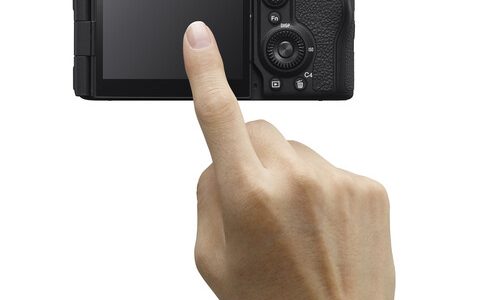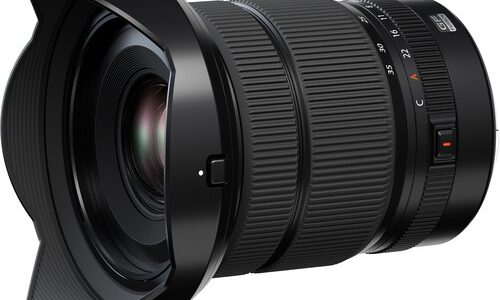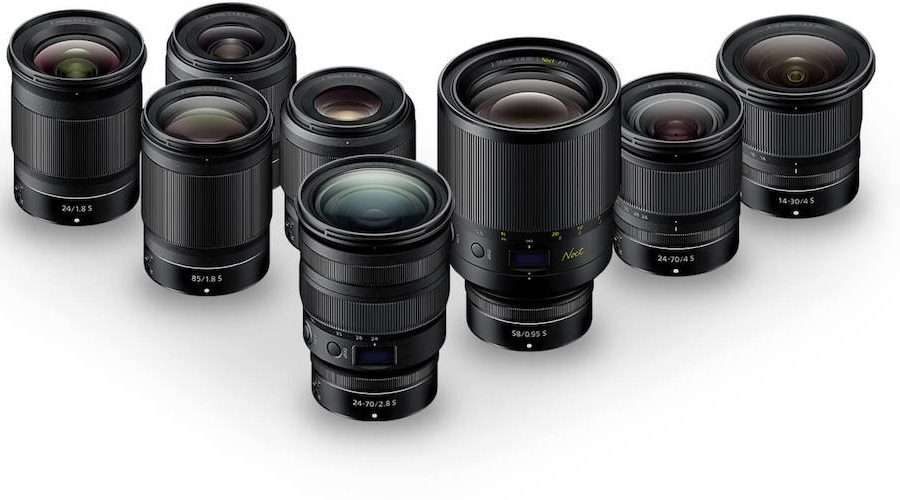

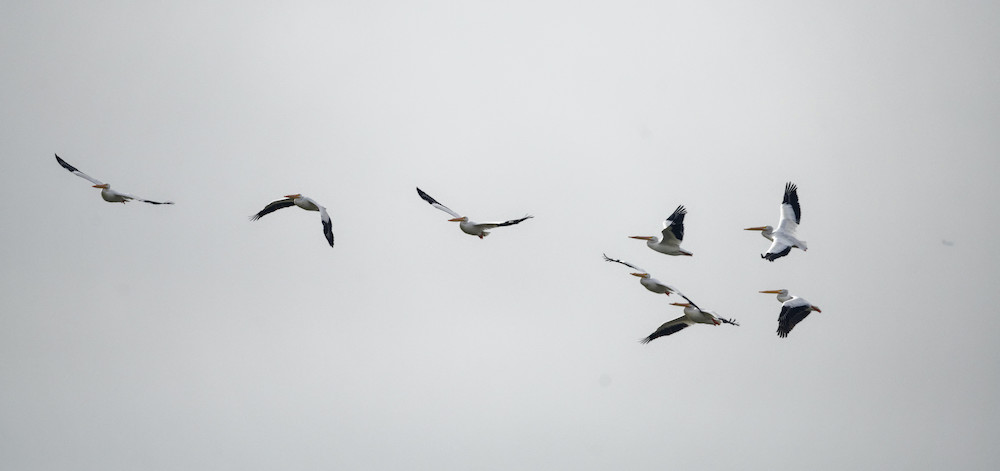
It’s camera and lens release season again, due to the recently cancelled CP+ show – while the show fell victim to the coronavirus, many of the cameras and lenses scheduled for the show are already announced and more are coming soon. Hopefully, the epidemic eases soon, with no further disruption to the lives and health of the people of China, and no more spread to the rest of the world. Whatever issues it causes in manufacturing are unimportant compared to its effect on human lives, especially in the hardest-hit areas in the city of Wuhan and Hubei Province – my thoughts are with every person affected or potentially affected by the virus.
The trends are interesting to look at, if not of all that much photographic use to the majority of the Luminous Landscape readership. So far, there have been two very interesting developments among camera bodies, plus a number of other incremental improvements. Canon has announced the development of a high-resolution mirrorless body with in-body stabilization, the EOS-R5. We don’t know exactly what high-resolution means since Canon hasn’t announced the pixel count, but the 8K video spec means at least 40 megapixels. This body explains a lot of Canon’s recent RF lens decisions – very high-end lenses, many lacking image stabilization, make far more sense on a stabilized high-resolution body than on either of the existing EOS-R bodies. Fujifilm has just introduced the X-T4, an update to the X-T3, which is already the best APS-C camera on the market. The headline feature from Fujifilm is in-body image stabilization – an improved version of the system in the X-H1, but in a body closer to the size and shape of the X-T3. Other highlights include an improved battery and very flexible slow-motion video, added to the excellent video modes on the X-T3. Lenses are expected or released from a variety of manufacturers, some very interesting and others disappointing. A few long-awaited cameras and lenses show no sign of materializing.
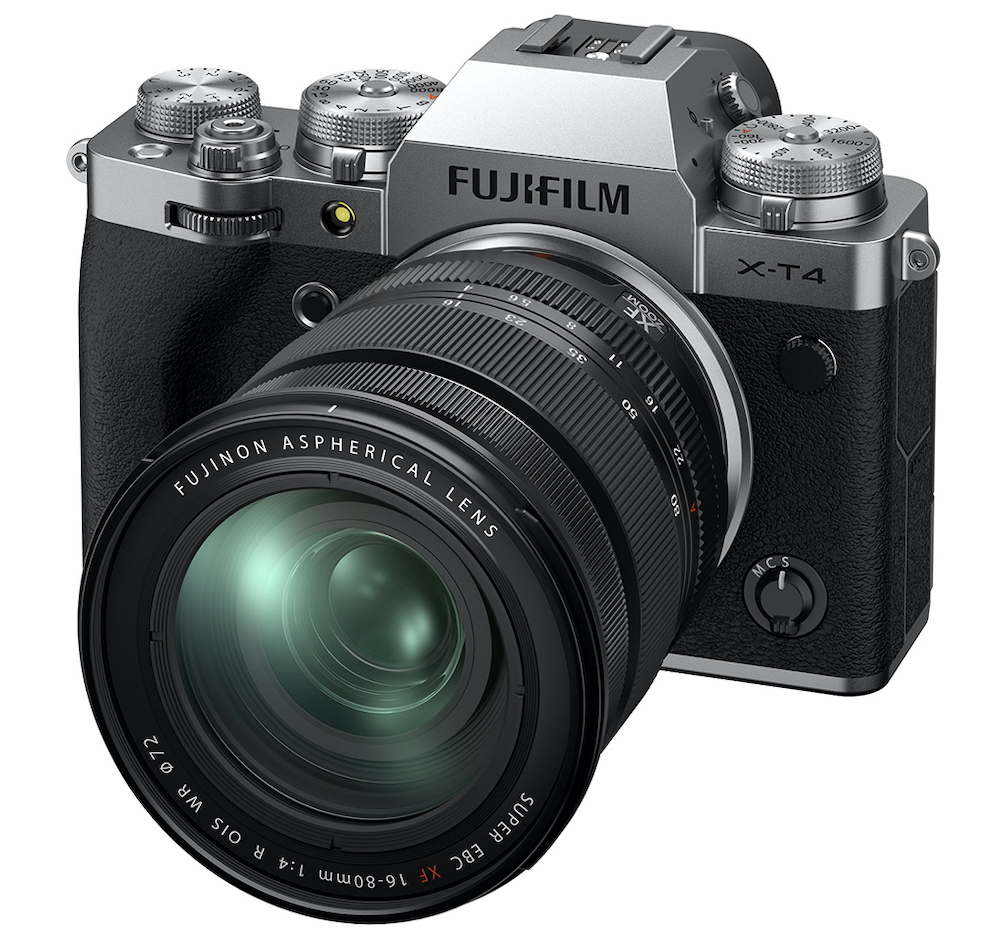
A Fujifilm X-T4 – an interesting new still/video hybrid
Cameras (and to a lesser extent lenses) have gotten so good that our tools are largely far more capable than what we are using them for. Even using these tools far outside of their intended purpose, they do a good job for styles of photography for which they were never designed. It’s not ideal to shoot a baseball game with a GFX 100, but it’s surprisingly possible, and in a way that shooting sports with medium format never was before. Conversely, it’s surprisingly possible to get landscapes out of a GH5, which is really a movie camera. Neither one would be the tool I’d pick for that particular job.
As a matter of fact, I chose them as examples because they’d be about the worst possible tool currently manufactured for the job at hand – but even bad by today’s standards is adequate. As a sports camera, a GFX 100 is somewhere in between a D2 and D3 class Nikon, or around a Canon 1D mk II or III (assuming the 100 MP don’t matter because you’re printing in a newspaper). It’ll be about as responsive as the best sports cameras in the world ten years ago, with similar AF – all the resolution in the world and the video modes are pure bonus. While it would be a very strange choice for most images at the 2020 Olympics, a photographer equipped with a GFX 100 at the 2008 Olympics would have had one of the fastest, surest-focusing cameras in the stadium.
Similarly, the landscape photographer with the movie camera… Until the Nikon D3x was released at the very end of 2008, there was no digital camera in the world (short of a Phase One back) that could improve on the still image quality of the GH5. Of course, nobody would use a GFX 100 as a sports camera, nor a GH5 for high-detail landscape work – unless there was a special reason. Maybe the Olympic photographer with the GFX 100 isn’t working for a newspaper – what if her job is to capture five or ten gorgeous images of the human body in action for huge prints? The fact that the GFX has the autofocus of a sports camera from not that long ago becomes significant. Similarly, what if the landscape photographer with a GH5 is working in timelapse? Suddenly, the video-focused camera makes more sense.
On the other hand, a sameness is creeping into our tools – increasingly, we have a bunch of similar cameras using even more similar sensors. Most cameras a LuLa reader might consider use a Sony or Sony-derived sensor in one of a few basic sizes and resolutions. These sensors come in ~24 mp APS-C, ~24 mp 24x36mm, high-resolution 24x36mm (around 45 mp, with one choice at 61 mp) and 33×44 mm (older 50 mp and brand-new 100 mp). all great sensors – pick any one for better image quality than most film ever had (yes, 11×14” Tech Pan in Microdol-X is still unbeaten…). Any of them will give you 11+ stops of dynamic range, and some will offer 13+ stops without resorting to HDR. Their maximum print size ranges from 16×24” (push to 24×36” with a good enough lens) on even the humblest last-generation APS-C sensor to “wider than your printer – and I don’t care what your printer is” for the GFX 100. The drawback is that they are all closely related, and all draw similarly at the sensor level. The choice is about the resolution you need, the manufacturer color science you prefer, and the lenses.
With a couple of notable exceptions, non-Sony derived sensors are becoming less and less relevant. Canon’s sensor design is quite different from a typical Sony, and has recently lagged behind, especially in dynamic range – they have been catching up lately, and the EOS-R5 whose development was recently announced may be very interesting. Micro 4/3 sensors lag farther and farther beyond the field, partially because of small size, but also because the current sensor was released in 2016, and it lacks back-side illumination and other features that have improved image quality in more recent generations. It’s not clear to me how closely Panasonic’s full-frame sensors hew to Sony designs – I haven’t used one, and the information and test images I’ve seen suggest they perform quite similarly.
If they ever get it right, Sigma’s Foveon technology (which is very different from anything else) seems to always be right around the next corner. Every time a new version of a Foveon comes out, it has some exceptional aspects of image quality, coupled with major drawbacks – and the next one is always supposed to be the breakthrough. The full-frame Foveon camera under development was just delayed into 2021 (or later). Theoretically, a Foveon sensor can offer both color and dynamic range benefits over a conventional Bayer sensor – but every version we’ve seen has significant pitfalls, especially above base ISO.

Fujifilm’s X-Trans is a Sony sensor with an unusual color filter over it and some very good color science in the camera’s processor. Their film simulation modes offer a uniquely flexible form of in-camera editing. The one caveat about X-Trans is that some RAW converters (including DxO) don’t support it at all, and others, including Adobe, don’t give their best performance on X-Trans files. Capture One and the various forms of Iridient’s converters both give excellent results. Nikon uses what are basically Sony sensor designs, then adds some features of their own that can actually make a difference. ISO 64 on the Z7 and D850 is an example of a Nikonism that has a noticeable effect. It’s noiseless as far as I can tell on close inspection, and it extends dynamic range. Nikon color science is also noticeably different from Sony – this could be in the Bayer filters (at least some Nikons are known to use custom filtration), the processing or possibly in customization to the sensor itself. Sony (of course), Pentax and everything in medium format use fully Sony sensor designs, although with different color filtration and processing. Right now, the state of the art in sensors belongs to Sony (and the Sony/Nikon and Sony/Fujifilm variants).
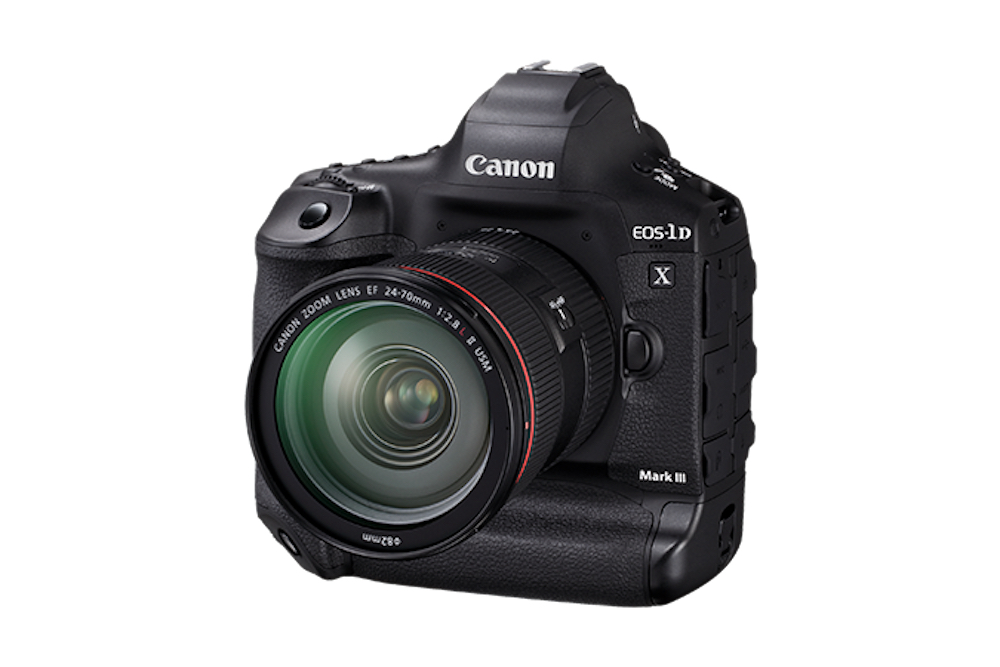
The Three Titans – full-frame sports bodies from Canon (1 Dx mk III), Nikon (D6) and Sony (A9 mk II): Unless you shoot sports for a living, you don’t need any of them. If you do, your choice is almost certainly already made by your lenses – they’re all fantastically capable, and nobody particularly wants to replace a 600mm f4. Even if you’re willing to replace a big telephoto (or several), the Canon speaks Canonish, the Nikon speaks Nikonese, and the Sony speaks Sonian. Whichever one feels most familiar in your hand will get the best shot when the action gets fast. The relevance of the dedicated sports bodies outside of their niche has declined as everything else gets better at what the sports bodies do best. If you’re at the Olympics, the World Cup, the World Series or the Kentucky Derby (etc.), you want one of these – otherwise, another camera in your favorite manufacturer’s line will offer more resolution and similar dynamic range and color for less weight and cost.
Ten years ago, you needed a “big-body” sports camera to get frame rates above 4-5 frames per second or capable moving subject AF. Today, even the most “non-sports” cameras will shoot moving subjects with aplomb. Fujifilm’s rangefinderish X-Pro 3 shoots 11 fps with a big buffer and excellent AF. It’s the least “sports” camera short of medium format I can think of – except that it’s actually as good a sports camera as a Nikon D4 or a Canon 1Dx (original)… Anything shaped like a SLR is only better! By the way, that shot of pelicans in flight at the top of the article was taken with a Z7 and a 500mm f5.6 PF on the FTZ adapter.

Olympus: SOS…—…SOS. In this case, SOS doesn’t mean “save our ship” – it means “same old sensor”. Olympus has been producing marvelously innovative bodies with class-leading image stabilization, “hit it with a hose” weather sealing and beautiful lenses. Imaging Resource just washed an E-M5 mk III with a garden hose – with Olympus’ permission – and that’s not even their best sealed body. They’re claiming 7 stops of image stabilization on the E-m1 mk III. That would be a 2 second exposure with a normal lens (25mm on Micro 4/3) – and I almost believe them. The E-m1 mk II would do ¼ second and sometimes ½ second in my hands, and they could easily have added a stop and perhaps two.
The problem is that the sensor they are using today had the lowest image quality on the market – in 2016. It lags significantly behind a good 24 mp APS-C sensor in dynamic range and color depth. It is one of the few sensors used in a modern interchangeable lens camera whose image quality is noticeably lower than average without making a large print. Other cameras run out of resolution at different print sizes, but Micro 4/3 also blows highlights and muddies shadows sooner than the competition. What they need most isn’t more resolution, it’s better quality at 20 mp. If they can keep their body and lens designs while coming up with a sensor that is competitive with the ~24 mp APS-C Sony sensors, they’d have a winner. Will their small sensor size let them?
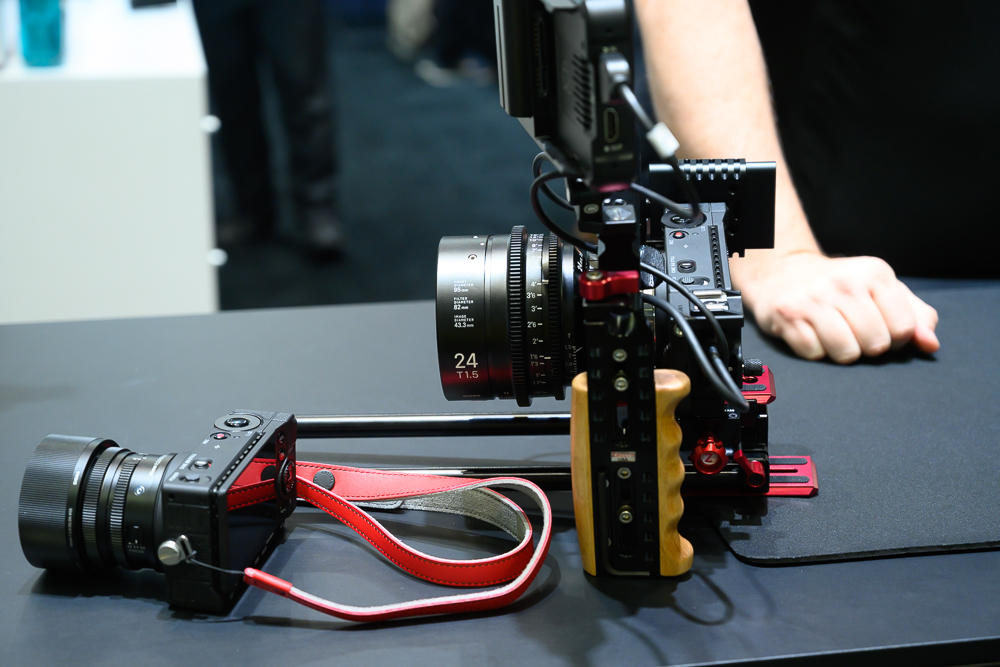
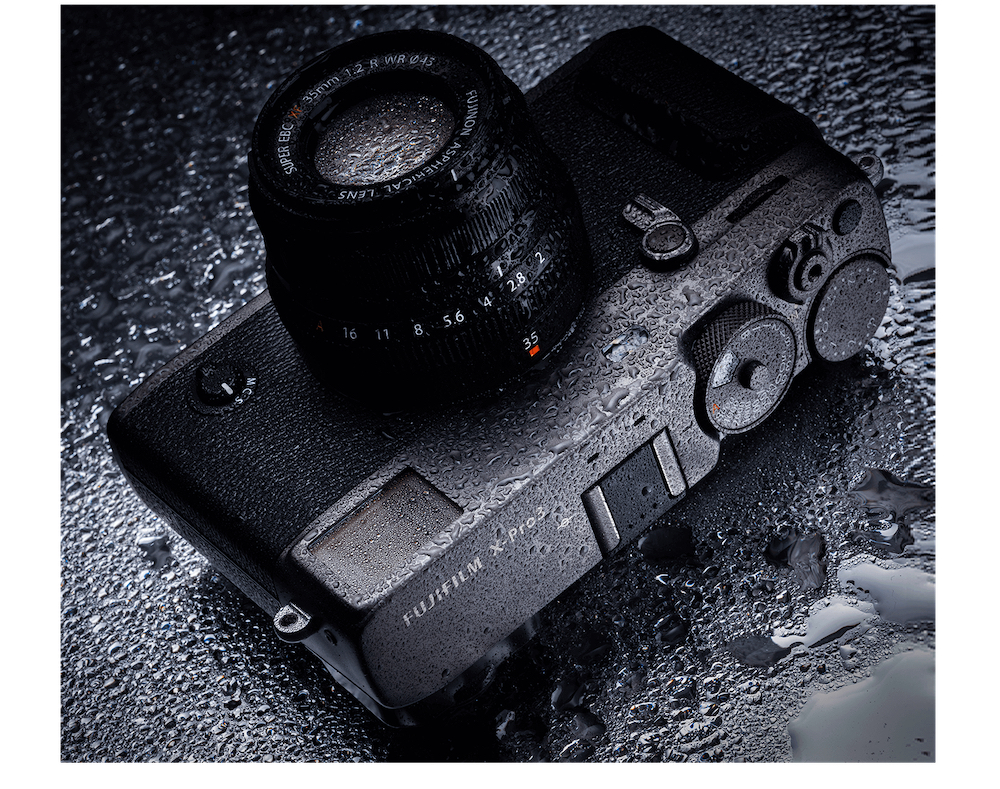
Fujifilm: Who would ever have predicted that the most anticipated video camera around would be coming from Fujifilm? The X-T4 was just released, and it added in-body image stabilization to the X-T3, already the most capable APS-C camera around for stills and video. Add stabilization and the other tweaks that Fujifilm added to the already capable X-T3, and it’s a powerhouse still/video hybrid that should cause Panasonic to take notice. The X-Pro 3 is probably the most intriguing and just plain fun body design of recent years. Only the Sigma fp is any competition for a design that rethinks what a camera needs to be. They have the absolute pinnacle in image quality with the GFX 100. They’re upgrading their offerings lower down the price scale with the X-T30 and X-T200, and they keep introducing more lenses, adding to the only comprehensive APS-C dedicated system on the market… I continue to be impressed with Fujifilm, and tend to think that there’s room in a smaller still camera market for Canon, Nikon, Sony +1, and it’s increasingly clear that the +1 is Fujifilm. We’ll have an X-T4 in for review soon, and I am excited to try it, having really liked the quirky X-Pro 3.
Canon: We don’t know much about it yet, and won’t until later in the spring, but the EOS-R5 may be exactly what the R system needs. Canon hasn’t released the resolution yet, but they have admitted that it has 8K video. Even if it has only the bare minimum resolution needed to support the lowest possible definition of “8K” – 7680 pixels on the long axis – it’s a 40 mp body. It could be somewhat higher-resolution than that if it is shooting true 8K (8000 or 8192 pixels on the long axis) instead of “16x Full HD”, and it could be significantly higher-resolution if it gets to 8K without using every pixel.

Wherever the resolution winds up, it’s in the range with Sony, Nikon and Panasonic’s pixel monsters, and it has some very nice R-mount glass waiting for it! It has in-body image stabilization, which explains the unstabilized R-mount lenses – here’s the body they’re meant for. I very much look forward to learning more about this monster, which looks like it could be fast as well as high-resolution. How will the dynamic range (a traditional Canon weakness) and color science (a strength) be? What will it cost? Anything under $5000 would be a bargain if it lives up to the specs… Canon also updated their popular Rebel DSLR line with the T8i…
Canon’s lens lineup for the R mount keeps expanding – and we see the first lens that makes any sense for the low-cost EOS-RP – the new variable-aperture 24-105. Shame on Canon for the f7.1 maximum aperture at the telephoto end, though. To keep it small and cheap, they had to either go variable aperture or lose the long end – they have a bigger, more expensive 24-105 f4 already. If this lens had been an f3.5-5.6, nobody would have minded at all. Even if it showed up as an f4-6.3, we’ve become numbed to f6.3 lenses by sheer repetition – remember when (not so long ago) no mainstream manufacturer would dare to release anything slower than f5.6 unless it was a mirror lens? Oh, Nikon once made a f5.6-8 zoom, but they can be excused because of the unusual focal length – it was a 1200-1700mm that went to f8 at 1700mm!
Even more shame on Canon for a supposed “L” lens with a f7.1 maximum aperture at the long end (the new 100-500)! The L lens will almost certainly not be cheap! Among all of Canon’s high-grade L lenses (47 between EF and RF mounts), only six are slower than f4, and none are slower than f5.6. There are three L zooms that are f5.6 at the long end (a 28-300mm, a very compact 70-300mm and a 100-400mm). There are also three f5.6 L primes, a compact, affordable 400mm plus an exotic 800mm and an extremely exotic, discontinued ($100,000 when it was available) 1200mm.
By many diffraction calculators, a f7.1 lens is probably diffraction limited wide open on the new EOS-R5. These two new Canon lenses are among the first lenses slower than f6.3 I’ve seen except for mirror lenses and cheap, no-name T-mount telephotos. F8 (and occasionally slower) mirror lenses are relatively common (most if not all current models are no-names, but various camera manufacturers and Sigma have made them in the past). There have also been very cheap no-name long telephoto primes and zooms as slow as f16 for years. There are a couple of inexpensive major-manufacturer telephoto zooms that go to f6.7 at very long equivalent focal lengths – shame on Fujifilm and Olympus.
When did f6.3 and f6.7 lenses start appearing from major manufacturers – I feel like it wasn’t much more than five years ago? Even the cheap kit zoom for the tiny Sony Nex-3 and Nex-5 was f5.6 at the long end a decade ago. Who’s going to be the first to release a mainstream non-mirror f8 lens??? Olympus has already managed the dubious honor of a lens that’s diffraction limited wide open, due to their tight pixel pitch. Lenses that are diffraction limited wide open are common on compact cameras and ubiquitous on phones, but still rare on interchangeable lens cameras…
Nikon: Two evolutionary DSLRs – the D6 is covered above, and the D780 essentially adds the new features from the Z6 (many of which involve video) to the popular D750. While it’s not a hybrid-viewfinder camera, if you’re willing to use the rear screen, it offers everything the Z6 has – and it has a pentaprism for true DSLR shooting! If you still like a DSLR, but also like the benefits of mirrorless for live view and video, Nikon now offers both in one body. The next step in this direction is a DSLR where the eye-level finder switches modes like an X-Pro, and it can be a true DSLR and a true hybrid camera at the same time. I don’t know how hard this would be to do with a prism in there – Fujifilm does it with a finder that isn’t looking through the lens, which is less complex.
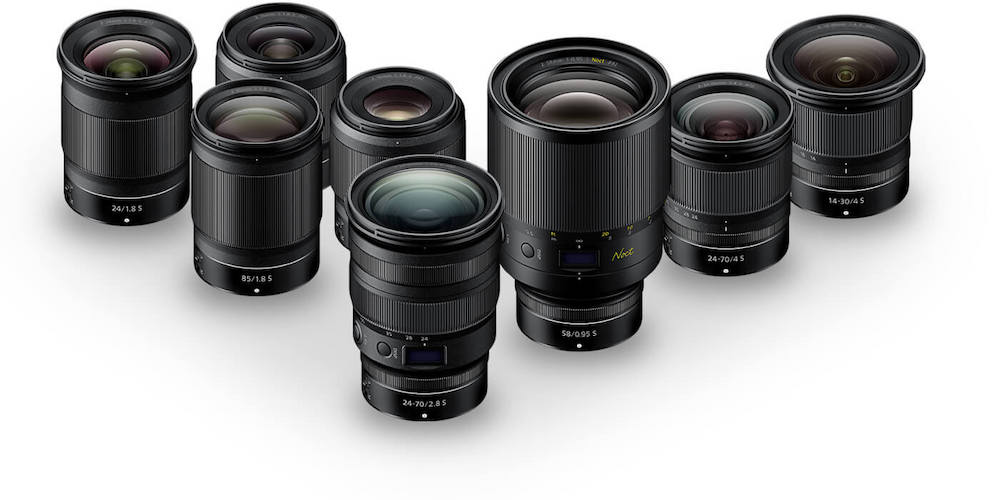
The real news from Nikon, though, is that they continue to fill out the Z lens line. It’s pretty comprehensive by now, other than telephotos. Starting from the wide/normal end makes sense, because that’s where the greatest benefits of the new mount come in. The FTZ is not a bad solution on the telephoto end, although we really do need the native 70-200 f2.8 (announced but not yet available), and ideally an f4 version as well. All of the Z lenses I’ve tried are very good at the very least, and many are excellent. My 50mm f1.8 Z is the sharpest lens I’ve ever used on any mount.
I haven’t used an Otus, but several reviewers put the relatively small, relatively inexpensive Nikkor in the Otus class. At the very least, it’s as good as any ~50mm lens except the Otus – a group that includes several much larger, much more expensive “Super 50s”. The 20mm has rounded out a nice collection of f1.8 primes, and if it’s anything like its stablemates, it’ll be a great lens.
It would surprise me if the 24-200mm f4-6.3 turns out to be a great lens, because slow, wide range travel zooms are hard to make even as good lenses, much less as great ones (If Nikon has succeeded, it’ll be a coup). The line needs the travel zoom, though – and it’s image stabilized so it’ll work well with the Z50 as well. Most really good lenses with ridiculously broad zoom ranges are broadcast lenses – and they cost a fortune and weigh a ton.
Panasonic: No news from our favorite video and cinema camera company at a stills-focused show. I haven’t seen any evidence that the S1 or S1r have gained any significant traction as still cameras. They might well be better served doing their introductions at or around the National Association of Broadcasters (NAB) show in April, especially if they’re highly motion-centric. People I know in the camera sales business (an unscientific sample) say that the S1 and S1r barely sell at all. The S1h, however, gets very good reviews as a lower-end digital cinema camera. When will Panasonic realize that their route to survival is through the moving image (and related disciplines, such as timelapse)? Have they already? Their competitors aren’t Sony and Nikon, but Blackmagic and possibly RED (if RED gets their less expensive camera out), along with the cinema divisions of Sony and Canon. Panasonic can make it in a smaller market, but as a movie camera company (perhaps one that makes a few still cameras for users of their video line).
Sony: Paging Sony… Anybody home? Sony, of course, has the most comprehensive body and lens lineup outside of Canon and Nikon’s legacy full-frame DSLR lineups. They aren’t doing a lot for CP+. The only major introduction is one new full-frame prime – welcome because, at 20mm, it’s the widest yet. Expectations from Sony at some point include more long glass, notably a 300mm f2.8, which is the most glaring hole in the lineup. The A7s II is also woefully out of date – and Canon, Panasonic and Fujifilm are raising the stakes for video-centric hybrids. Sony almost certainly can’t get away with a 4K A7s mk III, with Panasonic already supporting 6K and Canon promising 8K. The A7 III could use an update to the IV body with the better controls and sealing, but that’s tricky because the entry-level full-frame body is so price-sensitive. Any or all of the above could appear later this year.
Sony still makes APS-C gear, which is easy to forget. The state of Sony APS-C hasn’t changed since my last roundup. Budget bodies are an advantage, poor-quality lenses a disadvantage. The only new development in Sony APS-C comes courtesy of Nikon, who now make a similar camera in the Z50.
Software. Adobe has recently released the latest set of improvements to Lightroom Classic (what most of us call Lightroom). They are mostly minor usability tweaks and a few new bits of GPU acceleration, with nothing that affects image quality at all. One tweak that could be useful is that Adobe will now let you default to the camera manufacturer’s preferred settings, instead of Adobe’s. This option has been there, but you had to select it image by image – it’s now possible to set as a default. Most of the new camera support is composed of phones, although at the other extreme, there is preliminary support for the Phase One IQ4 150!. Just about any raw converter on the market on the market will outperform Lightroom Classic with many cameras – and Adobe seems uninclined to make significant changes. It is particularly galling to see Adobe coasting much of their desktop software in maintenance mode when it’s only available by subscription. Most of their development effort continues to go toward mobile and cloud-focused products. My current favorite raw converter is DxO, with Capture One fairly close behind. As I’ve noted before, it’s extremely difficult to match Adobe’s integration, but their image quality lags farther and farther behind the leaders.
Overall, CP+ season this year seems to be producing two potentially very broadly interesting cameras (X-T4 and EOS-R5), along with a number of smaller updates (D780, Rebel T8i), flawed updates (the E-M1 mk III needed a new sensor, which is what it didn’t get), niche cameras (the D6) and some missing cameras we might have hoped to see. I am very disappointed to see the Sigma full-frame Foveon pushed back another year – it has the potential to be a significantly different tool, with different strengths and weaknesses from what we have.
On the lens front, the biggest news may be Nikon slowly but surely building the Z lineup – if that 24-200mm travel zoom is much better than expected, it will really validate Nikon’s argument that their wide, shallow mount allows high-quality lens designs. Of course, Fujifilm could steal the show if they give their 50mm f1.0 a release date and a price tag that make it broadly interesting. Canon’s excellent existing RF lenses get more interesting with a body that can really show them off, but the f7.1 maximum apertures on a couple of new lenses are a discouraging trend. Sigma continues to introduce mirrorless lenses for L and FE mounts, some of which are new designs.
Dan Wells
March 2020

Lorem ipsum dolor sit amet, consectetur adipiscing elit, sed do eiusmod tempor incididunt ut labore et dolore magna aliqua. Ut enim ad minim veniam, quis nostrud exercitation ullamco laboris nisi ut aliquip ex ea commodo consequat. Duis aute irure dolor in reprehenderit in voluptate velit esse cillum dolore eu fugiat nulla pariatur. Excepteur sint occaecat cupidatat non proident, sunt in culpa qui officia deserunt mollit anim id est laborum.
Lorem ipsum dolor sit amet, consectetur adipiscing elit, sed do eiusmod tempor incididunt ut labore et dolore magna aliqua. Ut enim ad minim veniam, quis nostrud exercitation ullamco laboris nisi ut aliquip ex ea commodo consequat. Duis aute irure dolor in reprehenderit in voluptate velit esse cillum dolore eu fugiat nulla pariatur. Excepteur sint occaecat cupidatat non proident, sunt in culpa qui officia deserunt mollit anim id est laborum.
Lorem ipsum dolor sit amet, consectetur adipiscing elit, sed do eiusmod tempor incididunt ut labore et dolore magna aliqua. Ut enim ad minim veniam, quis nostrud exercitation ullamco laboris nisi ut aliquip ex ea commodo consequat. Duis aute irure dolor in reprehenderit in voluptate velit esse cillum dolore eu fugiat nulla pariatur. Excepteur sint occaecat cupidatat non proident, sunt in culpa qui officia deserunt mollit anim id est laborum.

Lorem ipsum dolor sit amet, consectetur adipiscing elit, sed do eiusmod tempor incididunt ut labore et dolore magna aliqua. Ut enim ad minim veniam, quis nostrud exercitation ullamco laboris nisi ut aliquip ex ea commodo consequat. Duis aute irure dolor in reprehenderit in voluptate velit esse cillum dolore eu fugiat nulla pariatur. Excepteur sint occaecat cupidatat non proident, sunt in culpa qui officia deserunt mollit anim id est laborum.
Lorem ipsum dolor sit amet, consectetur adipiscing elit, sed do eiusmod tempor incididunt ut labore et dolore magna aliqua. Ut enim ad minim veniam, quis nostrud exercitation ullamco laboris nisi ut aliquip ex ea commodo consequat. Duis aute irure dolor in reprehenderit in voluptate velit esse cillum dolore eu fugiat nulla pariatur. Excepteur sint occaecat cupidatat non proident, sunt in culpa qui officia deserunt mollit anim id est laborum.

Lorem ipsum dolor sit amet, consectetur adipiscing elit, sed do eiusmod tempor incididunt ut labore et dolore magna aliqua. Ut enim ad minim veniam, quis nostrud exercitation ullamco laboris nisi ut aliquip ex ea commodo consequat. Duis aute irure dolor in reprehenderit in voluptate velit esse cillum dolore eu fugiat nulla pariatur. Excepteur sint occaecat cupidatat non proident, sunt in culpa qui officia deserunt mollit anim id est laborum.
Lorem ipsum dolor sit amet, consectetur adipiscing elit, sed do eiusmod tempor incididunt ut labore et dolore magna aliqua. Ut enim ad minim veniam, quis nostrud exercitation ullamco laboris nisi ut aliquip ex ea commodo consequat. Duis aute irure dolor in reprehenderit in voluptate velit esse cillum dolore eu fugiat nulla pariatur. Excepteur sint occaecat cupidatat non proident, sunt in culpa qui officia deserunt mollit anim id est laborum.
Lorem ipsum dolor sit amet, consectetur adipiscing elit, sed do eiusmod tempor incididunt ut labore et dolore magna aliqua. Ut enim ad minim veniam, quis nostrud exercitation ullamco laboris nisi ut aliquip ex ea commodo consequat. Duis aute irure dolor in reprehenderit in voluptate velit esse cillum dolore eu fugiat nulla pariatur. Excepteur sint occaecat cupidatat non proident, sunt in culpa qui officia deserunt mollit anim id est laborum.
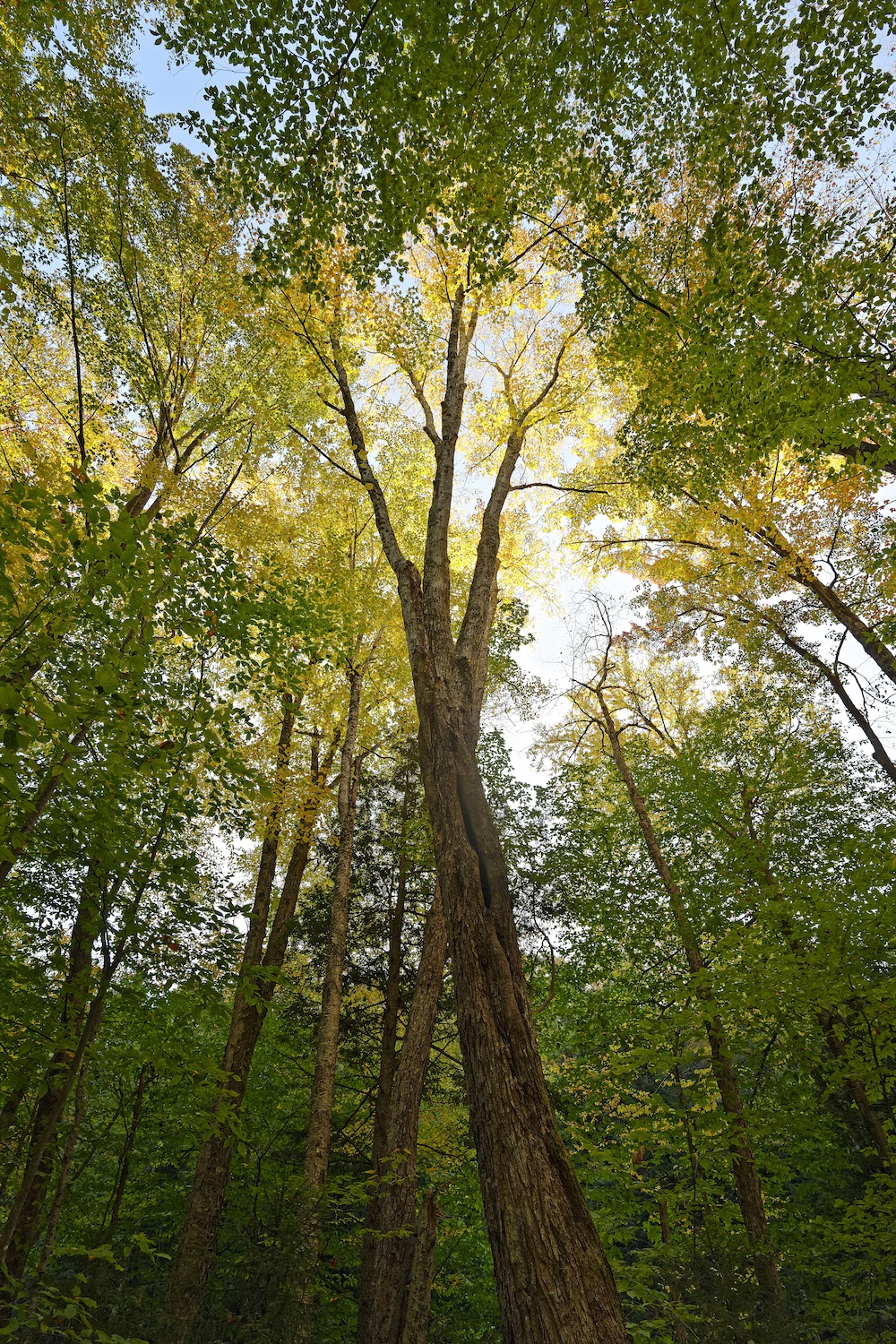
Lorem ipsum dolor sit amet, consectetur adipiscing elit, sed do eiusmod tempor incididunt ut labore et dolore magna aliqua. Ut enim ad minim veniam, quis nostrud exercitation ullamco laboris nisi ut aliquip ex ea commodo consequat. Duis aute irure dolor in reprehenderit in voluptate velit esse cillum dolore eu fugiat nulla pariatur. Excepteur sint occaecat cupidatat non proident, sunt in culpa qui officia deserunt mollit anim id est laborum.
Lorem ipsum dolor sit amet, consectetur adipiscing elit, sed do eiusmod tempor incididunt ut labore et dolore magna aliqua. Ut enim ad minim veniam, quis nostrud exercitation ullamco laboris nisi ut aliquip ex ea commodo consequat. Duis aute irure dolor in reprehenderit in voluptate velit esse cillum dolore eu fugiat nulla pariatur. Excepteur sint occaecat cupidatat non proident, sunt in culpa qui officia deserunt mollit anim id est laborum.
Lorem ipsum dolor sit amet, consectetur adipiscing elit, sed do eiusmod tempor incididunt ut labore et dolore magna aliqua. Ut enim ad minim veniam, quis nostrud exercitation ullamco laboris nisi ut aliquip ex ea commodo consequat. Duis aute irure dolor in reprehenderit in voluptate velit esse cillum dolore eu fugiat nulla pariatur. Excepteur sint occaecat cupidatat non proident, sunt in culpa qui officia deserunt mollit anim id est laborum.
Lorem ipsum dolor sit amet, consectetur adipiscing elit, sed do eiusmod tempor incididunt ut labore et dolore magna aliqua. Ut enim ad minim veniam, quis nostrud exercitation ullamco laboris nisi ut aliquip ex ea commodo consequat. Duis aute irure dolor in reprehenderit in voluptate velit esse cillum dolore eu fugiat nulla pariatur. Excepteur sint occaecat cupidatat non proident, sunt in culpa qui officia deserunt mollit anim id est laborum.

Lorem ipsum dolor sit amet, consectetur adipiscing elit, sed do eiusmod tempor incididunt ut labore et dolore magna aliqua. Ut enim ad minim veniam, quis nostrud exercitation ullamco laboris nisi ut aliquip ex ea commodo consequat. Duis aute irure dolor in reprehenderit in voluptate velit esse cillum dolore eu fugiat nulla pariatur. Excepteur sint occaecat cupidatat non proident, sunt in culpa qui officia deserunt mollit anim id est laborum.
Lorem ipsum dolor sit amet, consectetur adipiscing elit, sed do eiusmod tempor incididunt ut labore et dolore magna aliqua. Ut enim ad minim veniam, quis nostrud exercitation ullamco laboris nisi ut aliquip ex ea commodo consequat. Duis aute irure dolor in reprehenderit in voluptate velit esse cillum dolore eu fugiat nulla pariatur. Excepteur sint occaecat cupidatat non proident, sunt in culpa qui officia deserunt mollit anim id est laborum.
Lorem ipsum dolor sit amet, consectetur adipiscing elit, sed do eiusmod tempor incididunt ut labore et dolore magna aliqua. Ut enim ad minim veniam, quis nostrud exercitation ullamco laboris nisi ut aliquip ex ea commodo consequat. Duis aute irure dolor in reprehenderit in voluptate velit esse cillum dolore eu fugiat nulla pariatur. Excepteur sint occaecat cupidatat non proident, sunt in culpa qui officia deserunt mollit anim id est laborum.
Lorem ipsum dolor sit amet, consectetur adipiscing elit, sed do eiusmod tempor incididunt ut labore et dolore magna aliqua. Ut enim ad minim veniam, quis nostrud exercitation ullamco laboris nisi ut aliquip ex ea commodo consequat. Duis aute irure dolor in reprehenderit in voluptate velit esse cillum dolore eu fugiat nulla pariatur. Excepteur sint occaecat cupidatat non proident, sunt in culpa qui officia deserunt mollit anim id est laborum.

Lorem ipsum dolor sit amet, consectetur adipiscing elit, sed do eiusmod tempor incididunt ut labore et dolore magna aliqua. Ut enim ad minim veniam, quis nostrud exercitation ullamco laboris nisi ut aliquip ex ea commodo consequat. Duis aute irure dolor in reprehenderit in voluptate velit esse cillum dolore eu fugiat nulla pariatur. Excepteur sint occaecat cupidatat non proident, sunt in culpa qui officia deserunt mollit anim id est laborum.
Lorem ipsum dolor sit amet, consectetur adipiscing elit, sed do eiusmod tempor incididunt ut labore et dolore magna aliqua. Ut enim ad minim veniam, quis nostrud exercitation ullamco laboris nisi ut aliquip ex ea commodo consequat. Duis aute irure dolor in reprehenderit in voluptate velit esse cillum dolore eu fugiat nulla pariatur. Excepteur sint occaecat cupidatat non proident, sunt in culpa qui officia deserunt mollit anim id est laborum.
Lorem ipsum dolor sit amet, consectetur adipiscing elit, sed do eiusmod tempor incididunt ut labore et dolore magna aliqua. Ut enim ad minim veniam, quis nostrud exercitation ullamco laboris nisi ut aliquip ex ea commodo consequat. Duis aute irure dolor in reprehenderit in voluptate velit esse cillum dolore eu fugiat nulla pariatur. Excepteur sint occaecat cupidatat non proident, sunt in culpa qui officia deserunt mollit anim id est laborum.

Lorem ipsum dolor sit amet, consectetur adipiscing elit, sed do eiusmod tempor incididunt ut labore et dolore magna aliqua. Ut enim ad minim veniam, quis nostrud exercitation ullamco laboris nisi ut aliquip ex ea commodo consequat. Duis aute irure dolor in reprehenderit in voluptate velit esse cillum dolore eu fugiat nulla pariatur. Excepteur sint occaecat cupidatat non proident, sunt in culpa qui officia deserunt mollit anim id est laborum.
Lorem ipsum dolor sit amet, consectetur adipiscing elit, sed do eiusmod tempor incididunt ut labore et dolore magna aliqua. Ut enim ad minim veniam, quis nostrud exercitation ullamco laboris nisi ut aliquip ex ea commodo consequat. Duis aute irure dolor in reprehenderit in voluptate velit esse cillum dolore eu fugiat nulla pariatur. Excepteur sint occaecat cupidatat non proident, sunt in culpa qui officia deserunt mollit anim id est laborum.
Lorem ipsum dolor sit amet, consectetur adipiscing elit, sed do eiusmod tempor incididunt ut labore et dolore magna aliqua. Ut enim ad minim veniam, quis nostrud exercitation ullamco laboris nisi ut aliquip ex ea commodo consequat. Duis aute irure dolor in reprehenderit in voluptate velit esse cillum dolore eu fugiat nulla pariatur. Excepteur sint occaecat cupidatat non proident, sunt in culpa qui officia deserunt mollit anim id est laborum.

Lorem ipsum dolor sit amet, consectetur adipiscing elit, sed do eiusmod tempor incididunt ut labore et dolore magna aliqua. Ut enim ad minim veniam, quis nostrud exercitation ullamco laboris nisi ut aliquip ex ea commodo consequat. Duis aute irure dolor in reprehenderit in voluptate velit esse cillum dolore eu fugiat nulla pariatur. Excepteur sint occaecat cupidatat non proident, sunt in culpa qui officia deserunt mollit anim id est laborum.
Lorem ipsum dolor sit amet, consectetur adipiscing elit, sed do eiusmod tempor incididunt ut labore et dolore magna aliqua. Ut enim ad minim veniam, quis nostrud exercitation ullamco laboris nisi ut aliquip ex ea commodo consequat. Duis aute irure dolor in reprehenderit in voluptate velit esse cillum dolore eu fugiat nulla pariatur. Excepteur sint occaecat cupidatat non proident, sunt in culpa qui officia deserunt mollit anim id est laborum.

Lorem ipsum dolor sit amet, consectetur adipiscing elit, sed do eiusmod tempor incididunt ut labore et dolore magna aliqua. Ut enim ad minim veniam, quis nostrud exercitation ullamco laboris nisi ut aliquip ex ea commodo consequat. Duis aute irure dolor in reprehenderit in voluptate velit esse cillum dolore eu fugiat nulla pariatur. Excepteur sint occaecat cupidatat non proident, sunt in culpa qui officia deserunt mollit anim id est laborum.
Lorem ipsum dolor sit amet, consectetur adipiscing elit, sed do eiusmod tempor incididunt ut labore et dolore magna aliqua. Ut enim ad minim veniam, quis nostrud exercitation ullamco laboris nisi ut aliquip ex ea commodo consequat. Duis aute irure dolor in reprehenderit in voluptate velit esse cillum dolore eu fugiat nulla pariatur. Excepteur sint occaecat cupidatat non proident, sunt in culpa qui officia deserunt mollit anim id est laborum.
Lorem ipsum dolor sit amet, consectetur adipiscing elit, sed do eiusmod tempor incididunt ut labore et dolore magna aliqua. Ut enim ad minim veniam, quis nostrud exercitation ullamco laboris nisi ut aliquip ex ea commodo consequat. Duis aute irure dolor in reprehenderit in voluptate velit esse cillum dolore eu fugiat nulla pariatur. Excepteur sint occaecat cupidatat non proident, sunt in culpa qui officia deserunt mollit anim id est laborum.
Lorem ipsum dolor sit amet, consectetur adipiscing elit, sed do eiusmod tempor incididunt ut labore et dolore magna aliqua. Ut enim ad minim veniam, quis nostrud exercitation ullamco laboris nisi ut aliquip ex ea commodo consequat. Duis aute irure dolor in reprehenderit in voluptate velit esse cillum dolore eu fugiat nulla pariatur. Excepteur sint occaecat cupidatat non proident, sunt in culpa qui officia deserunt mollit anim id est laborum.
You May Also Enjoy...
Hand’s On: new Sony A9III and Sony 50mm G Master, Sony 85mm G Master, Sony 75-350mm APS lenses
A quick hands on look at Sony A9iii and the Sony APS 75-350mm len
The best wide-angle zoom in the world? The Fujinon G5 20-35mm f4 R WR reviewed.
FUJIFILM GF 20-35mm f/4 R WR L
